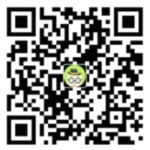GMAT测验RCOGWORD(二二)
Passage 22
The new school of political history that emerged in the 1960’s and 1970’s sought to go beyond the traditional focus of political historians on leaders and government institutions by examining directly the political practices of ordinary citizens. Like the old approach, however, this new approach excluded women. The very techniques these historians used to uncover mass political behavior in the nineteenth-century United State– quantitative analyses of election returns, for example– were useless in analyzing the political activities of women, who were denied the vote until 1920.By redefining“political activity,” historian Paula Baker has developed a political history that includes women. She concludes that among ordinary citizens, political activism by women in the nineteenth century prefigured trends in twentieth-century politics. Defining“politics” as“any action taken to affect the course of behavior of government or of the community,” Baker concludes that, while voting and holding office were restricted to men, women in the nineteenth century organized themselves into societies committed to social issues such as temperance and poverty. In other words, Baker contends, women activists were early practitioners of nonpartisan, issue-oriented politics and thus were more interested in enlisting lawmakers, regardless of their party affiliation, on behalf of certain issues thanin ensuring that one party or another won an election. In the twentieth century, more men drew closer to women’s ideas about politics and took up modes of issue-oriented politics that Baker sees women as having pioneered.131. The primary purpose of the passage is to(A) enumerate reason why both traditional scholarly methods and newer scholarly methods have limitations(B) identify a shortcoming in a scholarly approach and describe an alternative approach(C) provide empirical data to support a long-held scholarly assumption(D) compare two sholarly publications on the basis of their authors’ backgrounds (B)(E) attempt to provide a partial answer to a lon-standing scholarly dilemma132. The passage suggests which of the following concerning the techniques used by the new political historians described in the first paragraph of the passage?(A) They involved the extensive use of the biographies of political party leaders and political theoreticians.(B) They were conceived by political historians who were reacting against the political climates of the 1960s and 1970s(C) They were of more use in analyzing the positions of United States political parties in the nineteenth century than in analyzing the positions of those in the twentieth century.(D) They were of more use in naalyzing the policial behavior of nineteenth-century voters than in nalyzing the political activities of those who could not vote during that period. (D)(E) They were devised as a means of tracing the influence of nineteenth-century political trends on twentieth-century political trends.133. It ban be inferred that the author of the passage quotes Baker directly in the second paragraph primarily in order to(A) clarify a position before providing an alternative ot that position(B) differentiate between a novel definition and traditional definitions(C) provide an example of a point agreed on by different generations of scholars(D) provide an example of the prose style of an important historian (B)(E) amplify a definition given in the first pargraph134. According to the passage, Paula Baker and the new political historians of the 1960’s and 1970’s shared which of the following?(A) A commitment to interest-group politics(B) A idsregard for politica ltheory and ideology(C) An interest in the ways in which nineteenth-century politics prefigured contemporary politics(D) A reliance on such quatitiative techniques as the analysis of election returns (E)(E) An emplasis on the political involvement of ordinary citizens135. Which of the following best describes the structure of the first paragraph of the passage?(A) Two scholarly approaches are compared, and a shortcoming common to both is identified.(B) Two rival schools of thought are contrasted, and a third is allued to.(C) An outmoded scholarly approach is described, and a corrective approach is called for.(D) An argument is outlined, and counterargumnts are mentioned. (A)(E) A historical era is described in terms of its political trends.136. The information in the passage suggests that a pre1960’s political historian would have been most likely to undertake which of the following studies?(A) An analysis of voting trends among women voters of the 1920’s(B) A study of male voters’ gradual ideological shift from party politics to issue-oriented politics(C) A biography of an influential nineteenth-century minister of foreign affairs(D) An analysis of narratives written by previously unrecognized women activitists (C)A study of voting trends among naturalized immigrant laborers in a nineteenth-century logging camp
关键字:gmat测验 gmat测验时候 gmat测验报名 gmat测验介绍 什么是gmat测验
上篇:
综合教诲:四六级阅读命题的总结
下篇:
综合教诲:托福冲刺复习完竣提要
相关主题
1 一篇文章搞懂关键词、APP榜单排名、热门搜索等ASO优化知识! 2 今日头条官方正式上线CPA(按转化计费)模式! 3 移动APP应用运营推广模式_全面讲解什么是AARRR模型? 4 ASO优化推广经验:如何做好APP关键字优化? 5 什么是互联网运营?互联网运营主要是做什么的?工作内容和流程? 6 深度解读互联网运营!一篇文章让你知道什么是运营! 7 Rand Fishkin谈内容营销与SEO 8 最适合建站的Drupal主机推荐 9 伤不起的软文编辑人员 是凡人还是神仙? 10 微信公众平台快速上手教程Part4 关键词自动回复 11 思考组成网站的各个部分是否具有存在的必要呢? 12 学习网站优化的一些小经验分享
精彩主题






